Choosing the correct set of speaker stands can be a minefield. You might be thinking ‘which ones are the best suited to me?’, ‘how high should speaker stands be?’, or ‘why use speaker stands at all?’ If you’re asking yourself any of these questions then we can provide the answers.
First of all, it’s easy to overlook the importance of speaker stands (and many people do), but they’re often just as important to overall sound quality as speakers themselves. However, if not selected properly you put your speakers, sound quality, and interior aesthetic at risk. The last thing we want is to see our precious speakers toppled over!
Speaker stands are an essential part of any sound setup. They provide greater flexibility and allow us to position our speakers anywhere within a space. This takes us one step closer, aesthetically as well as acoustically, to the ultimate home audio experience.
So, when searching for the right speaker stand there are several key things to consider.
Choosing a Stand

When it comes to securing your speakers, there are a few factors you should consider which range from maximum load to inert filler.
But first, it’s worth thinking about what kind of environment your speakers will be placed in. Do you have pets or young children roaming the floors? Are any of your speakers placed near a door?
If yes, these are all reasons to spend a bit more time and money finding the ideal, robust stands.
Maximum Load
Any good-quality speaker stand will come with a maximum load (or weight rating). This tells you the heaviest speaker weight it can withstand. It’s important not to exceed this—the last thing anyone wants to see is your £1,000 speakers toppled over because their stands weren’t a suitable strength.
To avoid such a disaster, we recommend checking the product specifications for maximum load weights and comparing this against the weight of your speakers.
Top Plate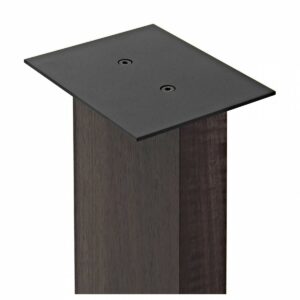
On a similar note, select stands with a suitably sized top plate. We’re not saying that you need to go for 100% coverage, but a 100 x 100 mm plate is clearly very risky for a speaker with base dimensions of 200 x 300 mm.
Some speaker stands come with the option to fix or secure the speaker to the top plate, usually by screwing the speaker to the stand. With this option, you can get away with slightly smaller top plates and maintain stability. However, this typically involves drilling holes into the speaker cabinet. While such stands offer an obvious stability advantage, hi-fi enthusiasts can be understandably reluctant to drill holes into their precious new toys.
Unfortunately, no universal rule exists to determine what size of top plate is appropriate. A judgement call should be made based on how the speaker will be attached to the stand and the general traffic around the speakers.
Base plate
One of the basics of freestanding structure design is that the wider and heavier the base, the more stable the structure will be. The same is true for speaker stands, for greater stability, it may be worth investing in stands with a wider base.
For additional stability, feet are usually attached to the base plate. There are two types of feet generally used: rubber feet for hard floors, and spikes for carpet. Sometimes spikes will have flat disks beneath them to make them suitable for wooden flooring too. It is worth checking which feet a stand comes with to ensure they’re appropriate for your home flooring. Some stands may even come with both feet types to make life easy.
Shop Now | FEF S2 Speaker Stands
Filler Compatibility
Continuing with the theme of stability: the heavier the stand, the more stable it will be. Some stands are hollow and allow you to fill them with sand or inert filler, thereby increasing their weight and stability. This can work out slightly more affordable than investing in extremely heavy-duty stands.
Filling hollow stands in cases where the base plate is small may provide a solution to potential instability.
Shop Now | Inert Filler
Matching Speaker Stands to Your Space
It’s easy to get bogged down in the technical aspects of choosing a speaker stand, but remember to consider their appearance. After all, this is something you’re going to be spending a lot of time admiring in your home!
Speaker Stand Design
Hours upon hours are spent designing speakers and amplifiers, so why not make sure your stands complement them? Colour-matching is often a good starting point.
Also, consider what material the stand is made of. How will this look when placed next to the material of your speaker? Is one a matte finish while the other is gloss? How will the materials suit my home environment? Are they durable or easy to clean?
Common materials for speaker stands are solid wood, vinyl-wrapped wood, and steel. If your budget allows it, we’d typically encourage you to choose steel stands; they’re the most durable and often compatible with inert filler or sand.
Cable management can also factor into your choice of speaker stands.
Nowadays, most speaker stands, such as the Mountson Sonos floor stands come with some form of built-in cable management solution, routing the cables down the stand and concealing them from view. Keeping the cables out of the way is great for keeping a ‘clean’ look but also means that your speakers are much less likely to get pulled off their stands by someone walking past.
Shop Now | Steel Speaker Stands
Do They Fit Your Home?
Not only should you think about matching the stands with their speakers, but also consider how they’ll fit with your interior.
While a large base plate means more stability for your speaker, this can look clunky and take up valuable floor space. Consequently, you may compromise by getting stands with smaller base plates and thinner bodies.
To deal with the potential trade-offs when choosing a speaker stand, it is worth selecting your priorities ahead of time. Ultimately, they will differ significantly from one person to the next. Oh, and if your speakers are in a shared space, you might want to consider your housemate’s priorities too…
How High Should Speaker Stands Be?
Good speaker stands should raise the speakers to the perfect listening height. As you might guess, the ideal height is level with the listener’s ear. As a rule of thumb, we’d recommend placing the speaker’s tweeter at the height of your ear while you’re seated. It might be time to phone a friend and get the tape measure out!
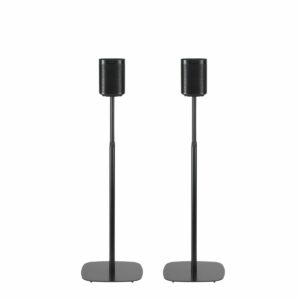
While many speaker stands use roughly the same standard height (60 – 65 cm from the base to top plate), consider whether this is appropriate for your space. This standard stand height assumes you will be sat on regular chairs/sofas, therefore, if you’ll be sat on bar stools or beanbags your ear level will differ.
Height-adjustable stands are a good solution for non-standard listening setups. They provide much more flexibility when positioning the speakers and can account for differing floor heights.
Shop Now | Height-adjustable stand
Coupling Vs Decoupling Speaker Stands
Coupling refers to how connected a speaker is to a surface. Decoupling, on the other hand, refers to the opposite, i.e., how separate a speaker is from a surface. Both coupling and decoupling are techniques aimed at minimising vibrations from a speaker’s enclosure. Using such techniques will reduce unwanted resonances and result in a better listing experience overall.
So which technique should you use? Well, this is controversial territory; the topic of which works better is seriously contested among audiophiles…
Now, we’re not going to settle the debate today, but here are some points worth noting.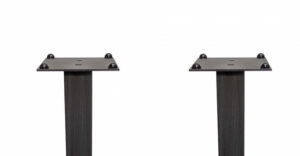
By placing a speaker on a stand, we are already decoupling it from the ground. To increase the level of decoupling, speaker stands may contain built-in spikes or isolation pads on the top plate (such as those used on the Fisual 91S-6 stands).
By contrast, to increase the coupling of the speaker with the ground, we can use inert filler to increase the weight of the speaker stands.
All of these measures, whether coupling or decoupling, aim to reduce the unwanted vibrations of the speaker cabinets. Whichever way you choose to go, you’ll be sure to improve your sound quality.
If you’re interested in hearing more about coupling and decoupling, let us know in the comments section below. There might just be a dedicated blog coming your way.
Shop Now | Fisual 91S-6 stands
Which Speaker Stands to Choose
It’s important to make the right call when choosing a speaker stand. Not only will it securely elevate your speaker above the ground, but it also has the potential to alter (for better or for worse) how your speakers sound.
In summary, here are the four key areas to consider when choosing speaker stands.
-
-
- Stability – the stands we choose should support the weight of our speakers, feature a top plate which comfortably supports our speaker, and be sturdy enough to stay upright
- Appearance – consider how the stands will look with your speakers and interior. Choose a design which complements the room and speakers
- Practicality – ensure the stands fit comfortably in your space and that the speakers can be placed with their tweeters at ear level
- Vibration prevention – finally, the stands you select should (ideally) take preventative measures to reduce the effects of vibration on speaker response
-
Has this guide made you feel more confident about the criteria for selecting a speaker stand?
Whether it’s to enhance stereo speakers or a surround-sound setup, we hope you feel better prepared to shop for speaker stands.
Start your search by checking out the speaker stands below.

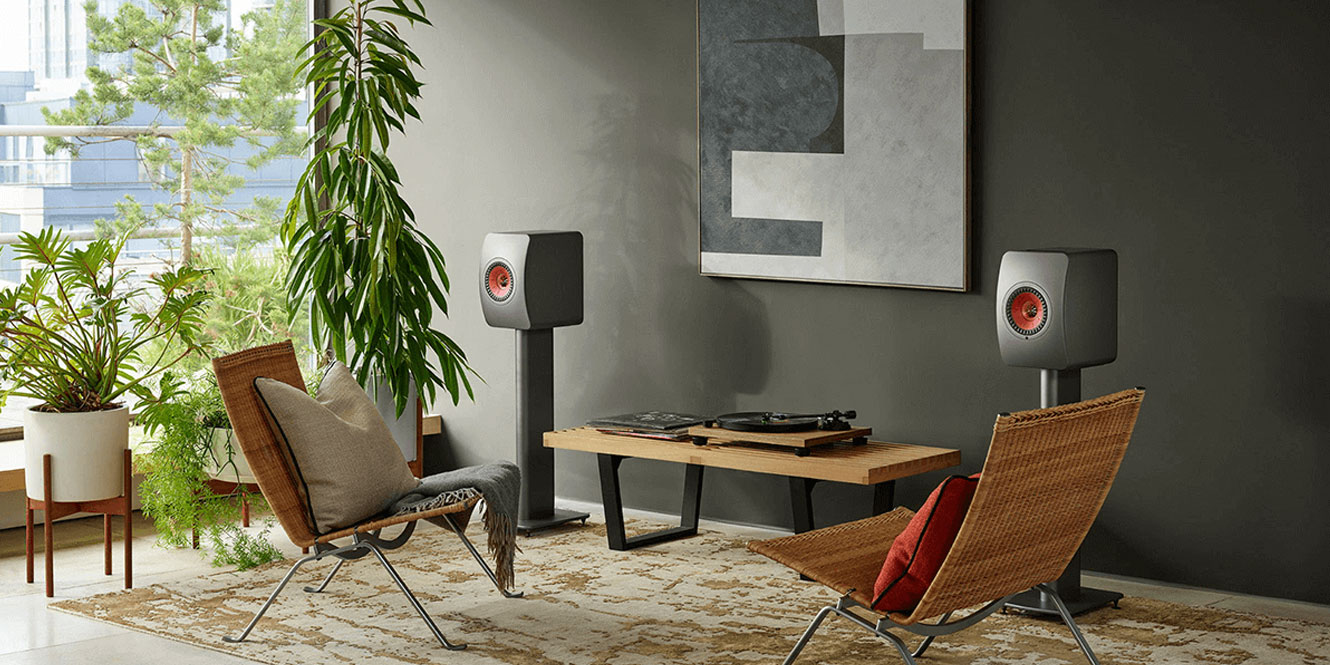
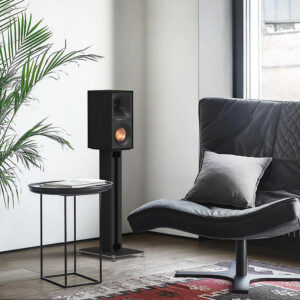
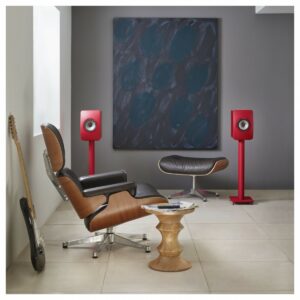
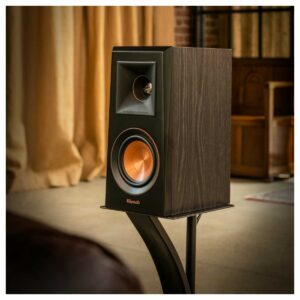



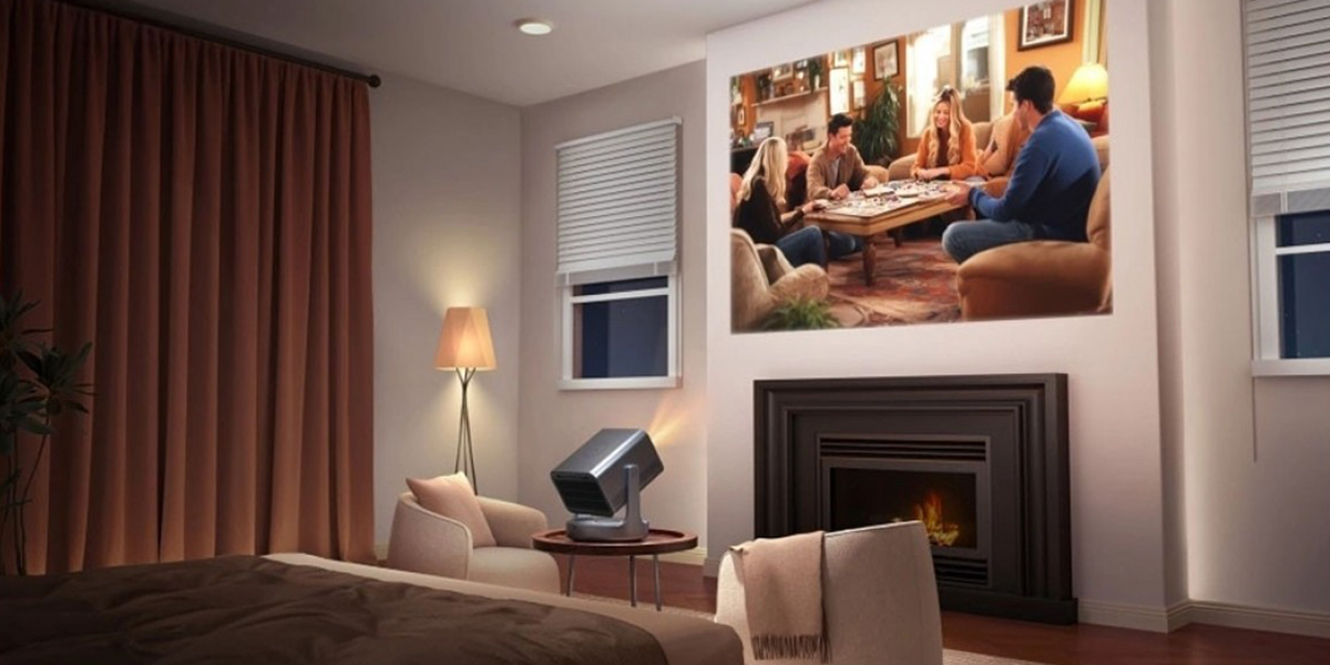







0 Comments